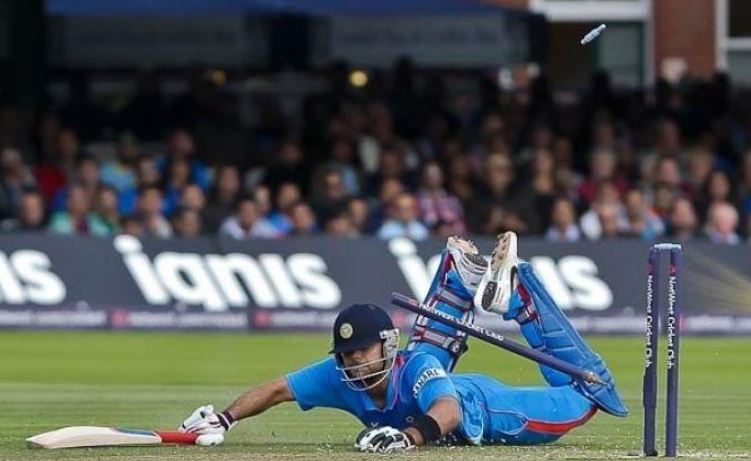Cricket, known for its rich history and terminology, has various types of dismissals, some of which can be quite embarrassing for a batsman. One such dismissal is the infamous Diamond Duck—a rare and unfortunate event that every cricketer dreads. But what exactly is a Diamond Duck, and why is it considered one of the worst ways to get out in cricket? Let’s explore this unique cricket term in detail.
What is a Diamond Duck?
A Diamond Duck occurs when a batsman is dismissed without facing a single delivery. Unlike a regular duck, where a batsman is out for zero runs after playing at least one ball, a Diamond Duck happens before the batsman even gets a chance to face a delivery. This generally happens due to a run-out or a timed-out dismissal.
How Does a Diamond Duck Happen?
A Diamond Duck can occur in the following ways:
- Run-Out Without Facing a Ball
- The most common way a batsman gets out for a Diamond Duck is by getting run-out before facing their first delivery. This often happens in situations where:
- A non-striker is called for a risky single and is run-out before reaching the crease.
- A confusion between the two batsmen leads to one being stranded mid-pitch.
- The most common way a batsman gets out for a Diamond Duck is by getting run-out before facing their first delivery. This often happens in situations where:
- Timed Out Dismissal
- If a new batsman fails to take their position at the crease within three minutes (as per ICC rules) after the fall of a wicket, they can be given out timed out. This is an extremely rare occurrence but still qualifies as a Diamond Duck since the batsman doesn’t get to face a ball.
- Obstructing the Field (Before Facing a Ball)
- Though extremely rare, if a batsman is adjudged out obstructing the field before facing their first ball, it can be classified as a Diamond Duck.
How Rare is a Diamond Duck?
A Diamond Duck is one of the rarest dismissals in cricket, simply because most batsmen at least get the opportunity to face a delivery before getting out. However, it has occurred in international cricket, franchise leagues, and domestic matches, making it a nightmare scenario for any player.
Famous Instances of Diamond Ducks in Cricket
Several cricketers have fallen victim to the unfortunate fate of a Diamond Duck. Here are some notable examples:
- Adam Gilchrist (1999 World Cup Final)
- The legendary Australian wicketkeeper-batsman was dismissed for a Diamond Duck in a warm-up match before the 1999 World Cup.
- Mark Waugh (Test Cricket)
- Mark Waugh, one of Australia’s greatest batsmen, suffered a Diamond Duck in Test cricket due to a run-out mishap.
- MS Dhoni (Indian Premier League – IPL)
- Even the legendary MS Dhoni was dismissed for a Diamond Duck in an IPL match when he got run-out without facing a ball.
Psychological Impact of a Diamond Duck
A Diamond Duck is more than just a statistic; it can be a major mental setback for a player. The embarrassment of walking back to the pavilion without even facing a ball can impact a batsman’s confidence, especially in crucial matches.
How to Avoid a Diamond Duck?
While a Diamond Duck often results from an unfortunate event, players can minimize the risk by:
- Improving their running between the wickets to avoid unnecessary run-outs.
- Communicating effectively with their batting partner to prevent confusion.
- Being alert and quickly taking their position at the crease when coming to bat.
The Diamond Duck is one of the most unfortunate and embarrassing ways to get out in cricket. Whether it’s due to a run-out or a timed-out dismissal, no batsman wants to walk back without facing a single delivery. Though rare, it has happened at the highest levels of the game, proving that even the best cricketers are not immune to its cruel fate.
Cricket fans love quirky terms, and the Diamond Duck is certainly one of the most unique. Have you ever seen a Diamond Duck happen in a match? Share your thoughts in the comments!

